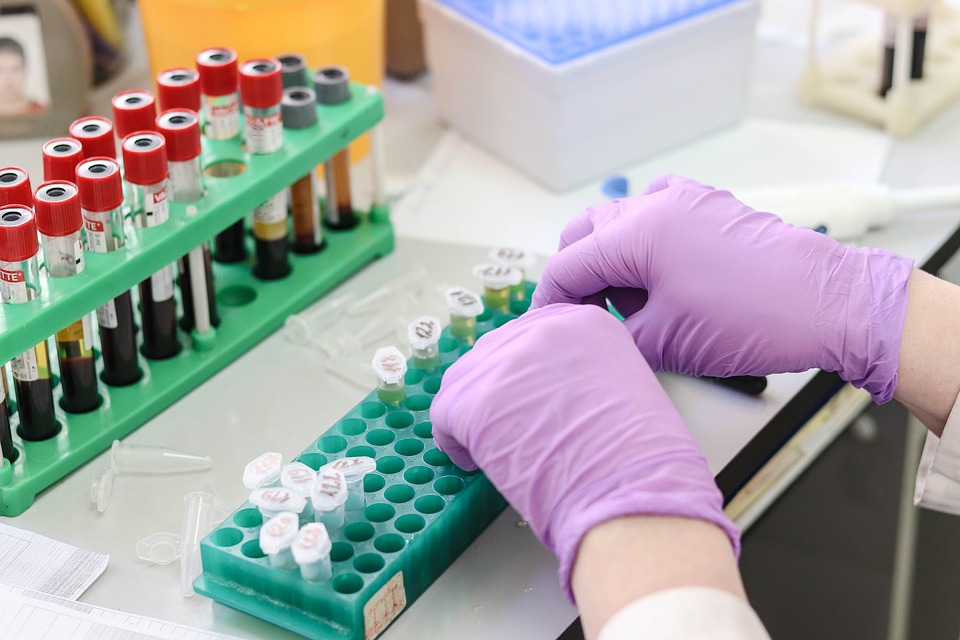The EEOC requires that employers receiving a complaint, or otherwise learning of alleged harassment in the workplace, to “investigate promptly and thoroughly… take immediate and appropriate corrective action by doing whatever is necessary to end the harassment, make the victim whole by restoring lost employment benefits or opportunities, and prevent the misconduct from recurring”. That’s a tall order to ensure just and fair handling of a harassment complaint – an essential order that all organizations are required, by law, to follow. The investigation process is, perhaps, the most critical element in dealing with harassment. In cases that have gone to court, it is often due to inadequate or absent investigations of complaints. Do you know how to conduct an investigation? This program will cover the intricacies of conducting a harassment investigation.
WHY SHOULD YOU ATTEND?
The investigation is essential in determining the validity of a complaint of protected class harassment and bullying. Conducting a fair and impartial investigation diminishes liability, and can decrease further misconduct by preventing it from becoming pervasive. The investigation may serve to minimize damages paid to the complainant. The institution demonstrates its commitment to the prevention and intervention of misconduct resulting in less harassment, discrimination, and other forms of misconduct on campus. By conducting its own investigation, the institution may avoid an investigation by another agency such as the EEOC. An investigation is required to help ensure a safe and healthy organizational climate.
Anyone who conducts an investigation must be trained in how to do so. Merely having the experience of conducting investigations without having been taught the art and science of the process is not enough. When your organization ensures it is investigator is trained in how to conduct investigations, it demonstrates its commitment to the prevention of harassment by the Court or outside agency.
The webinar addresses laws that HR is responsible for upholding. When the laws are not followed, it increases the liability of the organization and interferes with a fair and equitable work environment for employees.
AREA COVERED
- Determine if an investigation is necessary
- Discuss the steps of an investigation
- Explore the intricacies of interviewing the accuser, accused, and witnesses
- Differentiate between a formal and informal investigative procedure
- Determine the credibility of all interviewees
- Draw conclusions following an investigation
- List necessary elements in writing the formal report outlining the investigation.
LEARNING OBJECTIVES
- Discussion about if and when an investigation is required
- Comparison of a formal and informal investigation process
- Planning for the investigation
- A review of what constitutes a witness
- Legal issues surrounding an investigation, such as confidentiality, defamation of character, and false imprisonment
- The importance of documentation of each interviewee
- Examples of appropriate and inappropriate documentation and why it is critical
- Specific details regarding how to corroborate evidence
- A list of criteria to determine the credibility of those interviewed
- He said/she said
- The role of the investigator in forming an opinion following the investigation
- How to follow up with the target, accused, and the organization?
- The critical importance of an investigative report
- List of misconduct triggers that are a catalyst for an investigation
- Template final report
WHO WILL BENEFIT?
- Human Resources professionals – those tasked with investigations such as generalists, managers, and directors
- Attorneys
- HR Consultants
The investigation is essential in determining the validity of a complaint of protected class harassment and bullying. Conducting a fair and impartial investigation diminishes liability, and can decrease further misconduct by preventing it from becoming pervasive. The investigation may serve to minimize damages paid to the complainant. The institution demonstrates its commitment to the prevention and intervention of misconduct resulting in less harassment, discrimination, and other forms of misconduct on campus. By conducting its own investigation, the institution may avoid an investigation by another agency such as the EEOC. An investigation is required to help ensure a safe and healthy organizational climate.
Anyone who conducts an investigation must be trained in how to do so. Merely having the experience of conducting investigations without having been taught the art and science of the process is not enough. When your organization ensures it is investigator is trained in how to conduct investigations, it demonstrates its commitment to the prevention of harassment by the Court or outside agency.
The webinar addresses laws that HR is responsible for upholding. When the laws are not followed, it increases the liability of the organization and interferes with a fair and equitable work environment for employees.
- Determine if an investigation is necessary
- Discuss the steps of an investigation
- Explore the intricacies of interviewing the accuser, accused, and witnesses
- Differentiate between a formal and informal investigative procedure
- Determine the credibility of all interviewees
- Draw conclusions following an investigation
- List necessary elements in writing the formal report outlining the investigation.
- Discussion about if and when an investigation is required
- Comparison of a formal and informal investigation process
- Planning for the investigation
- A review of what constitutes a witness
- Legal issues surrounding an investigation, such as confidentiality, defamation of character, and false imprisonment
- The importance of documentation of each interviewee
- Examples of appropriate and inappropriate documentation and why it is critical
- Specific details regarding how to corroborate evidence
- A list of criteria to determine the credibility of those interviewed
- He said/she said
- The role of the investigator in forming an opinion following the investigation
- How to follow up with the target, accused, and the organization?
- The critical importance of an investigative report
- List of misconduct triggers that are a catalyst for an investigation
- Template final report
- Human Resources professionals – those tasked with investigations such as generalists, managers, and directors
- Attorneys
- HR Consultants
Speaker Profile
 Dr. Susan Strauss
Dr. Susan Strauss
Dr. Susan Strauss is a national and international speaker, trainer and consultant. Her specialty areas include management/leadership development, organization development, communication, and harassment and bullying. She is an expert witness for discrimination and harassment lawsuits. She trains and consults with business, education, healthcare, law, and government organizations from both the public and private sector. Dr. Strauss has authored over 30 book chapters, books, and articles in professional journals. She has been featured on 20/20, CBS Evening News, and other television and radio programs as well as interviewed for newspaper and journal articles. She has her doctorate in organizational leadership, is …
Upcoming Webinars

Understanding and Analyzing Financial Statements

Onboarding is Not Orientation: How to Improve Your New Hire…

Managing Toxic & Other Employees Who have Attitude Issues


Do's and Don'ts of Documenting Employee Behaviour, Performa…

Gossip-Free: Leadership Techniques to Quell Office Chatter


Outlook - Master your Mailbox - Inbox Hero Inbox Zero

Harassment, Bullying, Gossip, Confrontational and Disruptiv…


Excel & ChatGPT Synergy Masterclass: Unleashing Financial A…

Introduction to Microsoft Power BI Dashboards

Drive Recruiting Success with the Using Recruiting Metrics …

2025 EEOC & Employers: Investigating Claims of Harassment …

Impact Assessments For Supplier Change Notices

Mastering Job Descriptions: Legal and Practical Insights fo…

Effective Onboarding: How to Welcome, Engage, and Retain Ne…

What is in Store for Employers When Updating Employee Handb…

Designing Employee Experiences to Build a Culture of Compli…

Onboarding Best Practices for 2025: Proven Strategies to Po…

Accounting For Non Accountants : Debit, Credits And Financi…

Creating a Successful Job Rotation Program

The Anti-Kickback Statute: Enforcement and Recent Updates

FDA Compliance And Laboratory Computer System Validation

How To Create Psychological Safety in your Organization

Aligning Your HR Strategy with Your Business Strategy

Transforming Anger And Conflict Into Collaborative Problem …

How to Give Corrective Feedback: The CARE Model - Eliminati…

I-9 Audits: Strengthening Your Immigration Compliance Strat…

Zero Acceptance Sampling to Reduce Inspection Costs

Identifying, Managing, and Retaining High Potential Employe…

AI at Your Service: Enhancing Your Microsoft OfficeSkills w…



Why EBITDA Doesn't Spell Cash Flow and What Does

FDA Recommendations for Artificial Intelligence/Machine Lea…

Project Management for Non-Project Managers - How to commun…

Dealing With Difficult People In Life & Work

Developing and Implementing Quality Culture in the Organiza…

2-Hour Virtual Seminar on the 6 Most Common Problems in FDA…

Enhancing Pivot Tables with Images: Visualize Your Data Lik…

How to Write Effective Audit Observations: The Principles f…

How to Write Contracts for Procurement Professionals

Uplifting the Credibility of HR: How to Build the Credibili…

Strategic Interviewing & Selection: Getting the Right Talen…

Performance of Root Cause Analysis, CAPA, and Effectiveness…

FDA Audit Best Practices - Do's and Don'ts

Unlock Employee Loyalty: Stay Interviews Will Keep Them Eng…

How to Manage the Legal Landmine of the FMLA, ADA and Worke…

Excel Lookup Functions: VLOOKUP, HLOOKUP, and XLOOKUP Made …
